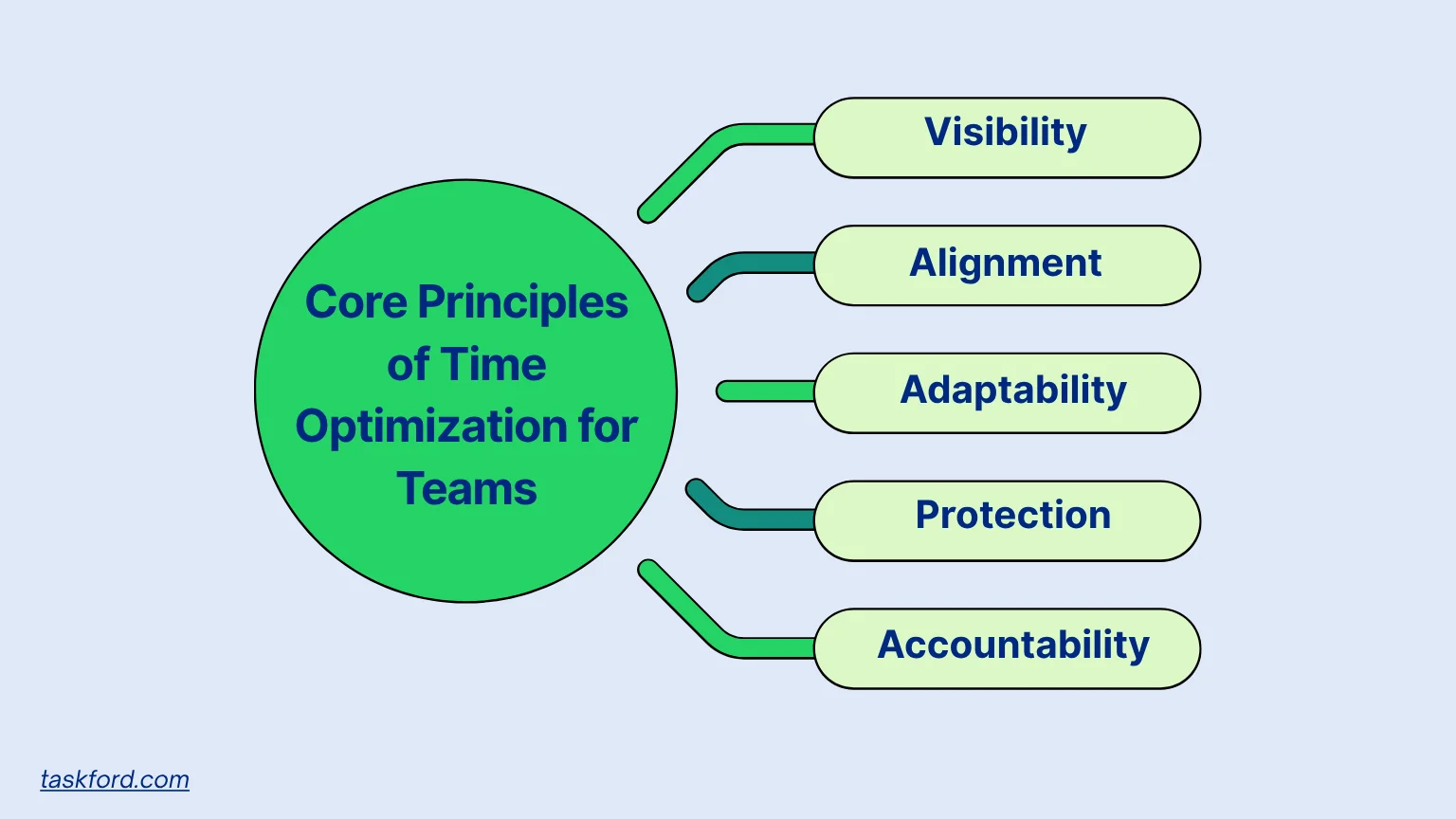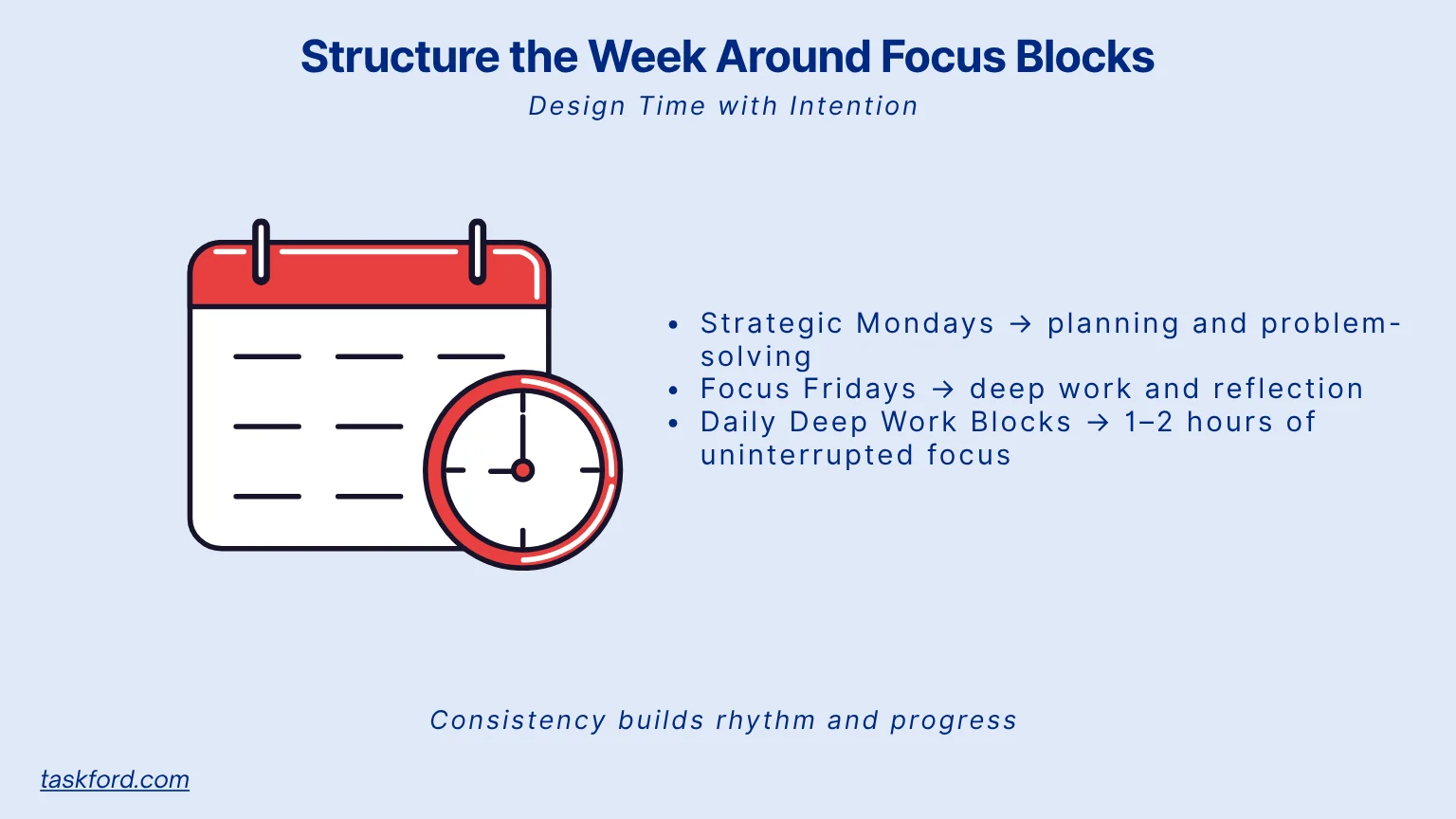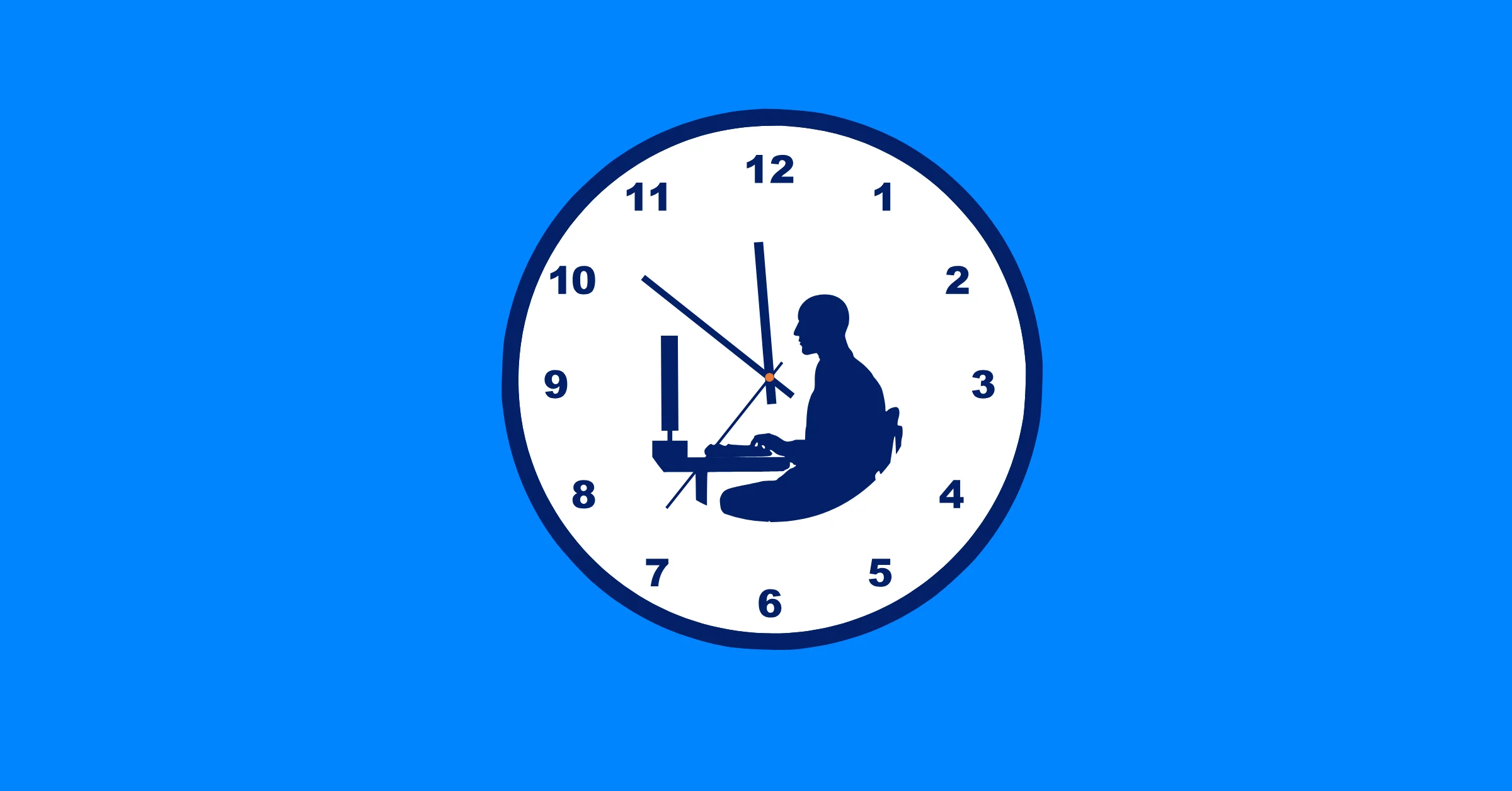Time Optimization for Teams: Balancing Urgent and Strategic Work
Learn the effective time optimization methods for teams. Discover how you can balance urgent and strategic work, manage priorities, and boost performance.
Every team feels the pressure of time. Deadlines arrive faster than expected, meetings pile up, and urgent tasks crowd out meaningful work. The result is a constant sense of motion but little sense of progress. The challenge isn’t that teams lack time, but that they lack control over how that time is used.
That’s where time optimization becomes essential. It’s not about working faster or squeezing more hours into a day. It’s about using time in the smartest possible way so that both immediate demands and long-term goals are met. Effective teams know that mastering time optimization is the difference between staying busy and being productive.
Defining Time Optimization in a Team Context
Time optimization is the deliberate process of evaluating how time is spent, identifying inefficiencies, and redirecting effort toward activities that deliver the highest overall return. It’s a strategic discipline that improves focus, reduces waste, and aligns daily actions with organizational goals.
In a team setting, time optimization means aligning everyone’s energy and priorities around shared outcomes. It requires clarity on what truly matters, collective discipline in protecting focus time, and constant adjustment as conditions change.
While time management is about control, time optimization is about intentionality. It ensures every meeting, task, and collaboration contributes to strategic progress rather than simply keeping people busy.
Time Optimization and the Balance Between Urgent and Strategic Work
Every team’s time is split between two forces: urgent work and strategic work. Both are necessary, but without conscious time optimization, the urgent will always consume the strategic.
Urgent Work: The Immediate Demand
Urgent work includes client requests, tight deadlines, and daily operations. These activities provide instant feedback and visible outcomes, so they feel productive. The problem arises when urgency dominates. Constant reactivity drains attention, shortens planning horizons, and reduces innovation.
Over time, this reactive cycle leads to burnout and stagnation, teams are always busy, but rarely moving forward.
Strategic Work: The Long-Term Advantage
Strategic work focuses on improvement, learning, and innovation. It’s the kind of effort that rarely feels urgent but generates compound returns. Planning, process design, research, and capability building fall into this category.
Because strategic work lacks immediate pressure, it’s the first to be sacrificed when teams are overwhelmed. Yet when teams protect time for strategy, they gain resilience, predictability, and creative energy.
Why Time Optimization Is Essential for Balance
Teams that master time optimization create a rhythm between these two modes of work. They treat urgent tasks as short-term deliverables, while systematically dedicating time to long-term goals.
This balance ensures that short-term productivity doesn’t come at the cost of future progress. Without time optimization, teams spend most of their time reacting instead of building. Knowing how to optimize time is an important part of implementing time management strategies.
Core Principles of Time Optimization for Teams

The best teams treat time optimization as a shared practice, not an individual habit. Below are five principles that form the foundation of an optimized schedule.
1. Visibility
Teams can’t improve what they can’t see. Start by tracking how collective time is spent. Use time analytics tools, calendar reviews, or manual audits to identify how much effort goes into operational work, communication, and strategic projects.
Visibility turns assumptions into data. Once you know where time leaks occur, optimization becomes actionable.
2. Alignment
Time should reflect strategic intent. Every task, project, and meeting should link to a measurable objective. If 80% of team hours support maintenance work while the main goal is innovation, there’s a misalignment.
Leaders can reinforce alignment by setting clear quarterly priorities and reviewing whether time allocation supports them.
3. Protection
Strategic work must be actively protected. Teams should reserve uninterrupted blocks of time for focused progress. Protected time can take many forms: deep work mornings, no-meeting days, or dedicated strategy sessions. This protection helps prevent reactive tasks from swallowing the week.
4. Adaptability
Optimization is not static. Priorities evolve, and so should time allocation. Teams should regularly reassess where time goes and adjust as conditions change. Adaptive scheduling keeps time distribution balanced even during high-pressure periods.
5. Accountability
Time optimization thrives on accountability. Teams should review their time use in retrospectives or weekly syncs, identifying where reactive work has crept in and adjusting accordingly. When time becomes a shared metric just like budget or output, teams begin treating it as a strategic resource.
Practical Methods for Applying Time Optimization
Theories only matter if they translate into daily routines. Here are practical steps teams can take to apply time optimization effectively.
A. Conduct a Time Audit

Begin with an honest look at how the team currently spends time. For one or two weeks, categorize work into urgent, strategic, and routine tasks. The goal isn’t perfect tracking, it’s awareness.
Once patterns are visible, identify which low-value activities can be automated, delegated, or eliminated. Time optimization starts with subtraction, not addition.
B. Redefine Priorities Using Clear Ratios
Time allocation should match business objectives. Define a target ratio, for example, 70% operational work and 30% strategic projects. Adjust the ratio based on project phases or seasonal demands. Discuss this ratio openly so everyone understands the time strategy and buys into the balance.
C. Structure the Week Around Focus Blocks

Unstructured calendars invite urgency to take over. To counter this, teams can schedule structured time blocks:
- Strategic Mondays: Allocate the start of the week to planning and problem-solving.
- Focus Fridays: Protect this day for uninterrupted progress on key initiatives.
- Daily Deep Work Blocks: Reserve one or two hours per day where communication is paused.
Consistency builds rhythm. Even small, recurring blocks compound into significant results over time.
D. Optimize Meetings and Communication
Meetings often represent the largest area for time optimization. Eliminate unnecessary sessions, shorten durations, and clarify objectives. Move routine updates to asynchronous channels so meetings focus on decision-making.
Also, set communication boundaries. Not every message requires an instant reply. Teams that manage communication intentionally gain back hours each week.
E. Leverage Tools That Support Time Optimization
Digital tools can help sustain optimization if used wisely.
- Time-tracking platforms provide visibility into how time is spent.
- Project management software helps prioritize and allocate tasks clearly.
- Automation tools remove repetitive work.
Choose tools that enhance focus and clarity, not ones that add noise. TaskFord, a comprehensive project management and resource planning platform, has all these mentioned features that can make time optimization easier for teams of all sizes.
![]()
Leadership’s Role in Driving Time Optimization
Leadership determines whether time optimization becomes part of team culture. A manager’s habits around urgency, planning, and focus directly influence how the team spends its time.
Leaders can support time optimization by:
- Modeling proactive behavior: planning instead of rushing.
- Protecting team focus by setting realistic deadlines.
- Reducing unplanned work through better forecasting.
- Encouraging reflection after intense cycles of urgent work.
When leaders prioritize calm, focused productivity over constant urgency, they shift the team’s mindset from reactive to deliberate. Effective leaders also talk about time openly. During one-on-ones or retrospectives, they ask not only what was achieved but how time was spent to achieve it. This shifts attention toward sustainable productivity.
Measuring the Impact of Time Optimization
To know whether time optimization works, teams must measure outcomes. The goal is not to track every minute, but to assess whether time investments are delivering strategic results.
Here are a few useful metrics:
- Task Value Ratio: The percentage of time spent on high-value vs. routine work.
- Meeting Load: The number of meetings per week and total time spent in them.
- Project Cycle Time: How long key deliverables take from planning to completion during project lifecycle.
- Employee Focus Score: Self-reported or observed ability to maintain attention on deep work.
- Strategic Goal Progress: The proportion of objectives achieved within a defined period.
Regular Optimization Reviews
Regular reviews using these metrics help teams identify whether they’re spending time effectively or simply staying busy. When performance improves across these indicators, it signals that optimization efforts are producing real impact. Treat time optimization as an ongoing feedback loop:
- Audit time use.
- Identify inefficiencies.
- Adjust priorities.
- Measure again.
This simple cycle ensures continuous improvement. Over time, it becomes part of the team’s rhythm, not a one-time initiative.
Common Mistakes in Time Optimization
Even experienced teams can fall into traps when implementing time optimization. Watch for these pitfalls:
- Overcomplicating the process: Adding too many tools or layers of tracking defeats the purpose.
- Rigidity: Fixed schedules that ignore changing priorities lead to frustration.
- Neglecting energy management: Time optimization isn’t just about hours, it’s also about maintaining energy and focus.
- Ignoring culture: Without leadership support and open communication, optimization becomes another abandoned initiative.
True optimization simplifies work. It makes priorities clear and removes friction from daily execution.
Building a Culture of Continuous Time Optimization
Time optimization works best when it becomes part of the team’s culture. This culture values focus over busyness and depth over constant motion. Teams can nurture this mindset by:
- Celebrating progress on strategic initiatives, not just completed tasks.
- Encouraging breaks and mental recovery as part of effective time use.
- Reviewing time allocation as a regular agenda item.
- Making time efficiency a shared responsibility, not an individual burden.
When everyone contributes to optimizing time, small changes accumulate into major productivity gains.
Conclusion: Time Optimization Is the Real Competitive Edge
Time optimization is the ultimate multiplier for teams. It bridges the gap between urgent needs and strategic goals, ensuring that every hour contributes to meaningful progress.
By combining the structure of time management with the intent of time optimization, teams gain clarity, focus, and resilience. They learn to plan with purpose, execute with discipline, and protect the time that fuels long-term success.
The most successful teams don’t chase more hours, they use their existing ones better. Start with one small step: audit your team’s time this week, identify one area for improvement, and commit to adjusting it. Optimized time compounds, and over months, it becomes the quiet force that separates good teams from truly great ones.
Learn more
- Lag and Lead Time in Project Management: Key Concepts and Calculation Methods
- 10 Practical Time Management Tools & Techniques That Actually Work
- 5 Project Time Tracking Myths That Are Holding Your Projects Back
Making work simpler,
smarter, and more connected
Join our waitlist and be notified first.

Related Blog
Subscribe for Expert Tips
Unlock expert insights and stay ahead with TaskFord. Sign up now to receive valuable tips, strategies, and updates directly in your inbox.






